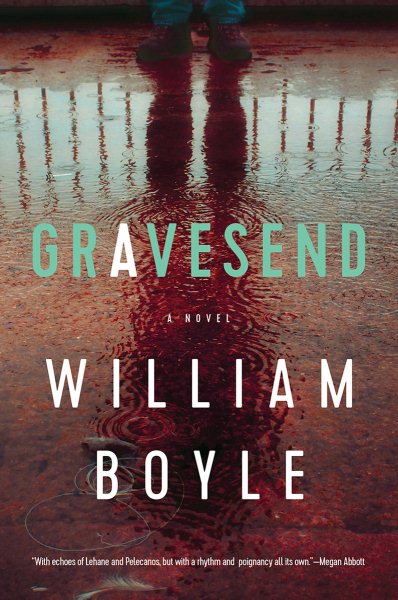By John M. Floyd. Special to the Clarion-Ledger Sunday print edition (September 9)
When failed actress Allesandra Biagini returns from Los Angeles to her Brooklyn neighborhood following the death of her mother, she finds that nothing much has changed in the past eleven years: it’s still a place she both loves and hates. And that’s a feeling shared by most of the people she knows.
 Gravesend is a glum, gritty, depressing place on the wrong side of the Brooklyn tracks—but it’s also an old, close-knit neighborhood with a small-town feel, where everyone knows everyone else and everyone else’s business.
Gravesend is a glum, gritty, depressing place on the wrong side of the Brooklyn tracks—but it’s also an old, close-knit neighborhood with a small-town feel, where everyone knows everyone else and everyone else’s business.
What the gossips don’t know is that Conway D’Innocenzio, one of Allesandra’s former classmates and the stock boy at the local Rite Aid, is planning a murder. Sixteen years ago, troublemaker Ray Boy Calabrese was convicted of the hate-crime killing of Conway’s brother, and now that Ray Boy’s been released from prison, Conway intends to get even.
The problem is, he finds that he can’t bring himself to do the deed, even after years of nursing the grudge, and it’s this cowardly failure to act—along with the fact that the regretful Ray Boy no longer seems to be a threat to anyone—that forms the basis of the plot.
Other players include Eugene Calabrese, a troubled fifteen-year-old who idolizes his Uncle Ray Boy and fancies himself a gangster; sweet but reclusive Stephanie Dirello, who has always admired Allesandra and secretly longs for Conway; and bartender Amy Falconetti, a Flushing native and Allesandra’s love interest, who also appears in Boyle’s recent novel The Lonely Witness. There’s even a local mob boss, Enzio Natale, and his deadly henchmen.
Nothing about any of these people is predictable, and it’s a testament to Boyle’s talent that by the end of the novel most of their lives intersect in a way that’s both perfect and unexpected.
William Boyle’s writing has been compared to that of Elmore Leonard, George Pelecanos, Richard Price, and Dennis Lehane, and for good reason. Similarities include a mastery of setting, pitch-perfect dialogue, and detailed, suspenseful plotting.
Gravesend has all of these, but its biggest strength probably lies in the depth of its characters and the fact that there is so much conflict at every turn, and on many levels: dead-end jobs, discrimination, dysfunctional families, broken dreams, and of course the ever-present street crime and violence. And the neighborhood itself plays a huge part in the story.
In one paragraph we’re given a look at it through the eyes of Allesandra, on her way home: “She strained to see down to the avenue. Old ladies with shopping carts. Chinese men blowing on hot coffee in doorways. Others with plastic bags, talking on cell phones, texting, looking down. The sidewalks were wet where storeowners had hosed them down. Garbage flitted around, paper bags and rotten fruit, and she swore she could smell it all the way up in the train.”
In this novel Boyle has given us the best of all literary worlds: complex characters, a gripping story, and an elegance of language not often found in crime fiction. In addition, it’s a story that portrays Italian-Americans in a way that seems far more real and believable than what we’re accustomed to seeing on the page and the screen—probably because Boyle is himself a product of the neighborhood where the book is set, and knows it so well.
At its core, Gravesend is a realistic and compulsively readable story of mean streets, neighborhood bars, wanna-be gangsters, former schoolmates, revenge killers, Italian and Russian mobsters, and working-class people struggling to survive.
It’s a powerful novel, one that the reader will remember long after it’s finished.
John M. Floyd is an Edgar Award nominee and the author of the upcoming book The Barrens. He and his wife Carolyn live in Brandon.
William Boyle will be at Lemuria on Wednesday, September 26, at 5:00 to sign and read from Gravesend.


Comments are closed.